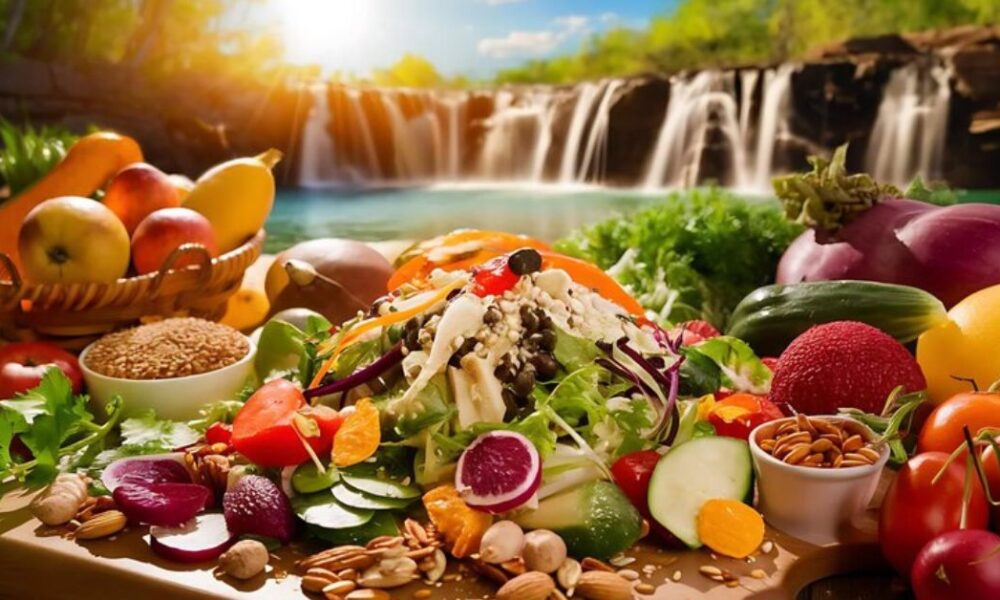The term “Zelissamu” evokes curiosity and fascination. This culture, shrouded in mystery and rich in tradition, holds a significant place in the annals of history. But what exactly is Zelissamu, and why is it so captivating? Let’s embark on a journey to explore the various facets of this intriguing culture, from its historical roots to its modern-day presence.
Historical Background
The origins of Zelissamu can be traced back to ancient times. Emerging from a blend of indigenous practices and external influences, the early Zelissamu people laid the foundation for a culture that would endure for centuries. Archaeological findings suggest that their ancestors were adept at agriculture, pottery, and metallurgy, which played crucial roles in their daily lives.
Key Historical Events
Several pivotal events have shaped the course of Zelissamu history. The arrival of influential leaders, the establishment of key settlements, and interactions with neighboring cultures all contributed to the evolution of their society. One notable event was the Great Migration, during which the Zelissamu people moved to new territories, bringing their customs and traditions with them.
Influential Figures
Throughout their history, the Zelissamu have been led by remarkable individuals who left indelible marks on their culture. Leaders like King Abam, known for his wisdom and diplomacy, and Queen Eriam, celebrated for her contributions to the arts, are still revered today. Their legacies continue to inspire and guide the Zelissamu people.
Location and Environment
Zelissamu culture is deeply influenced by its geographical setting. Nestled in a region characterized by diverse landscapes, from lush valleys to arid plains, the environment has shaped the way of life for its inhabitants. The rich natural resources of the area have also played a crucial role in their economic and cultural development.
Impact of Geography on Culture
The geographical diversity of Zelissamu has fostered a unique blend of cultural practices. The fertile lands allowed for agricultural prosperity, leading to the development of intricate irrigation systems and farming techniques. Meanwhile, the mountainous regions provided natural defenses, influencing the construction of fortified settlements.
Traditions and Customs
Zelissamu culture is a tapestry of traditions passed down through generations. From birth to death, every stage of life is marked by specific customs and rituals. For example, the naming ceremony of a newborn is a joyous occasion involving music, dance, and communal feasting.
Festivals and Celebrations
Festivals hold a special place in the hearts of the Zelissamu people. The Festival of Light, celebrated annually, symbolizes the victory of good over evil and features elaborate processions, firework displays, and traditional performances. These celebrations not only strengthen community bonds but also preserve cultural heritage.
Art and Craft
The artistic expressions of the Zelissamu are both diverse and vibrant. Intricate beadwork, pottery, and textile weaving are just a few examples of their craftsmanship. Each piece of art tells a story, reflecting the values and beliefs of the culture. These creations are often passed down as family heirlooms, preserving their legacy.
Linguistic Features
The language of Zelissamu is as rich and complex as its culture. It comprises a variety of dialects, each with its unique phonetic and grammatical characteristics. This linguistic diversity is a testament to the culture’s adaptability and resilience.
Writing System
Common Phrases and Expressions
Communication in Zelissamu is marked by a wealth of idiomatic expressions and proverbs. Phrases like “The sun shines brighter on a shared path” emphasize the value placed on community and cooperation. These sayings encapsulate the wisdom of the culture, offering insights into their worldview.
Social Structure
Family is the cornerstone of Zelissamu society. Extended families often live together, sharing resources and responsibilities. This close-knit structure fosters a sense of unity and support, ensuring that every member is cared for.
Community Roles
Within the Zelissamu community, everyone has a role to play. Elders are revered for their wisdom and experience, while youth are encouraged to learn and contribute. This balance between tradition and innovation ensures the continuity and growth of the culture.
Social Hierarchies
Although Zelissamu society is generally egalitarian, certain hierarchies exist based on age, knowledge, and contributions to the community. Leader is chosen for their abilities and integrity, rather than inherited status, reflecting the culture’s meritocratic values.
Major Deities and Myths
Religion is integral to Zelissamu life, with a pantheon of deities representing various aspects of nature and human experience. Myths and legends, such as the tale of Lira, the goddess of the harvest, are recounted during religious ceremonies, reinforcing moral lessons and cultural values.
Religious Rituals
Rituals in Zelissamu culture are elaborate and deeply symbolic. From daily prayers to grand temple festivals, these practices are designed to honor the gods and seek their blessings. Participation in these rituals fosters a sense of belonging and spiritual fulfillment.
Places of Worship
Temples and shrines dot the landscape of Zelissamu, serving as centers of worship and community gatherings. These structures, often adorned with intricate carvings and vibrant murals, are architectural marvels that reflect the artistic and spiritual devotion of the people.
Staple Foods and Ingredients
Zelissamu cuisine is a delightful blend of flavors and textures. Staples like millet, sorghum, and yams are combines with an array of spices and herbs to create hearty and nutritious meals. Fresh produce and locally sourced ingredients ensure that the food is both healthy and sustainable.
Popular Dishes
Signature dishes such as Zeli stew, a rich and savory blend of vegetables and meat, and Eriam bread, a soft and fluffy flatbread, are belove. These dishes are often prepare during festivals and family gatherings, showcasing the culinary skills of the Zelissamu people.
Culinary Rituals and Dining Etiquette
Dining in Zelissamu is a communal affair, emphasizing the importance of sharing and togetherness. Meals are often accompanied by traditional songs and stories, creating a lively and engaging atmosphere. Proper etiquette, such as offering food to elders first, reflects the culture’s respect for tradition and hierarchy.
Traditional Attire
The traditional clothing of Zelissamu is both practical and beautiful. Garments is made from locally source materials and feature intricate patterns and vibrant colors. Each piece of clothing holds symbolic meaning, often representing the wearer’s social status, profession, or life stage.
Evolution of Fashion
While traditional attire remains popular, modern influences have also made their mark on Zelissamu fashion. Contemporary designs often blend traditional elements with new styles, creating a unique and dynamic fashion scene. This fusion of old and new reflects the culture’s adaptability and creativity.
Symbolism in Clothing
Clothing in Zelissamu is more than just a means of covering the body; it is a form of expression. Colors, patterns, and accessories are chosen with care, each carrying specific meanings. For example, red symbolizes courage and vitality, while blue represents wisdom and tranquility.
Main Industries and Occupations
The economy of Zelissamu is diverse, with agriculture, craftsmanship, and trade playing key roles. Farmers grow a variety of crops, while artisans produce goods such as pottery, textiles, and jewelry. Trade, both local and international, has historically been a major driver of economic growth.
Trade and Commerce
Markets in Zelissamu are bustling hubs of activity, where goods and ideas are exchange. Trade routes connect the region with neighboring cultures, facilitating the flow of products and fostering cultural exchange. These interactions have enriched the Zelissamu economy and broadened their horizons.
Economic Challenges and Developments
Like any society, Zelissamu faces economic challenges such as resource scarcity and market fluctuations. However, the community’s resilience and innovation have led to significant developments in sustainable practices and technological advancements. These efforts ensure the continued prosperity of the culture.
Traditional Education Methods
Education in Zelissamu is holistic, encompassing practical skills, moral teachings, and spiritual knowledge. Elders play a crucial role in imparting wisdom, while apprenticeships provide hands-on learning opportunities. This approach ensures that knowledge is preserve and passe down through generations.
Modern Education Influences
In recent years, formal education systems has introduce, incorporating elements of global knowledge while respecting traditional values. Schools and universities offer a wide range of subjects, preparing students for both local and international opportunities. This blend of old and new enriches the learning experience.
Notable Scholars and Intellectuals
Zelissamu has produced many notable scholars and intellectuals who have contributed to various fields such as literature, science, and philosophy. Figures like Dr. Tanu, a renowned historian, and Professor Lira, a leading scientist, exemplify the culture’s commitment to knowledge and excellence.
Major Art Forms
Art is a vital part of Zelissamu culture, encompassing various forms such as painting, sculpture, and performance art. Each form is a means of storytelling, conveying the values, beliefs, and experiences of the people. Traditional art often features motifs inspired by nature and mythology.
Notable Works of Literature
Literature in Zelissamu is rich and varied, with oral traditions playing a significant role. Epic poems, folktales, and historical chronicles has passed down through generations, preserving the culture’s history and wisdom. Contemporary writers also contribute to this literary heritage, exploring new themes and perspectives.
Influence of Art and Literature on Society
Art and literature are not only reflections of Zelissamu society but also powerful tools for social change. Through creative expression, artists and writers address important issues, challenge norms, and inspire action. Their work fosters a sense of identity and community, bridging the past and the present.
Traditional Musical Instruments
Music is an integral part of Zelissamu life, with traditional instruments such as drums, flutes, and stringed instruments creating a distinctive sound. These instruments are often handmade, using locally sourced materials .
Popular Dance Forms
Dance is a vibrant expression of Zelissamu culture, with various forms reflecting different aspects of life. From the energetic and rhythmic steps of the Harvest Dance to the graceful movements of the Moonlight Dance, each form has its own significance and style. Dance brings people together, celebrating their shared heritage.
Role of Music and Dance in Cultural Identity
Music and dance are not just entertainment; they are essential to the cultural identity of the Zelissamu. These art forms convey emotions, tell stories, and strengthen communal bonds..
Contemporary Lifestyle
Today, Zelissamu culture is a dynamic blend of tradition and modernity. Technology, global communication, and urbanization have introduced new ways of living, enriching the cultural landscape.
Impact of Globalization
Preservation of Culture
Efforts to preserve Zelissamu culture are ongoing, with initiatives aimed at documenting traditions, promoting education, and supporting local artisans..
Conclusion
Zelissamu culture is a rich tapestry woven . Its people have shown remarkable resilience and adaptability, embracing change while honoring their heritage. As we look to the future, the continued preservation and celebration of Zelissamu culture will ensure that its unique legacy endures.
FAQs
What is the significance of Zelissamu festivals?
Zelissamu festivals are vital in celebrating cultural heritage, fostering community bonds, and honoring deities and traditions. They are occasions for communal joy, artistic expression, and the passing down of customs.
How has modern technology affected Zelissamu traditions?
Modern technology has introduced new ways of preserving and sharing Zelissamu traditions. Digital archives or social media or online platforms allow for wider dissemination of cultural knowledge but there are concerns about the loss of personal and hands-on transmission of traditions.
What are some unique aspects of Zelissamu cuis
Unique dishes like Zeli stew and Eriam bread reflect the culture’s agricultural heritage and culinary creativity.
Zelissamu culture
Preservation efforts include documenting oral traditions, promoting traditional arts and crafts, and integrating cultural education into the school curriculum. Community events and cultural festivals also play a crucial role in keeping the culture alive.
Who are some notable figures in Zelissamu history?
Notable figures include King Abam, known for his leadership and diplomacy, Queen Eriam, celebrated for her contributions to the arts, and Dr. Tanu, a renowned historian. These individuals have left lasting legacies that continue to inspire the Zelissamu people.











